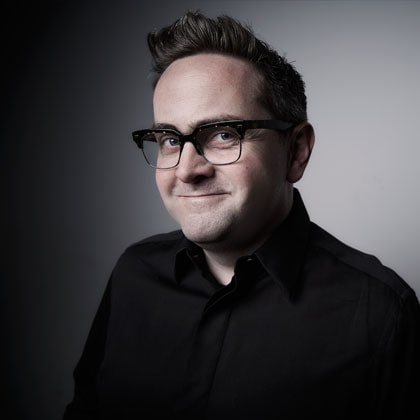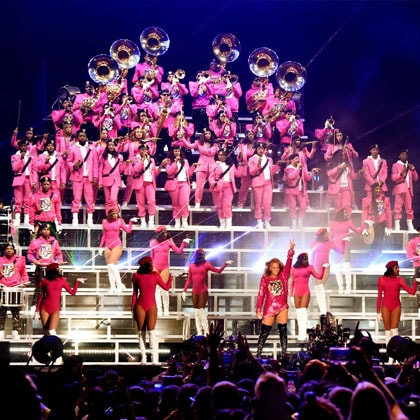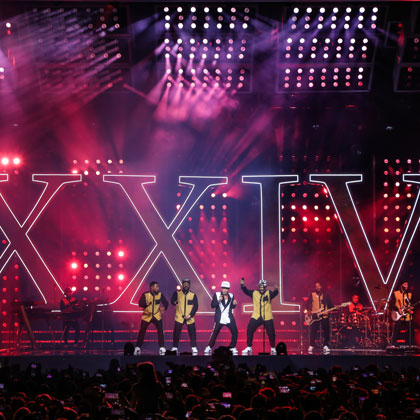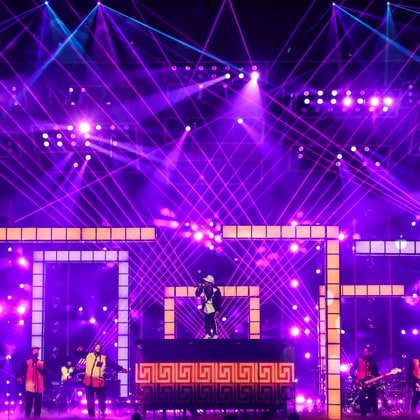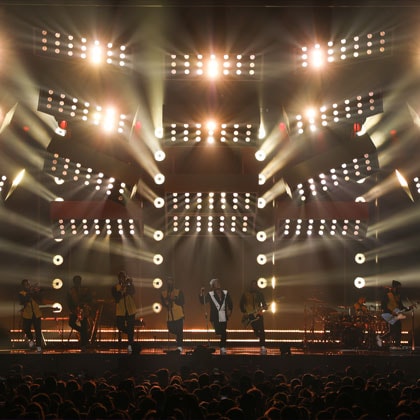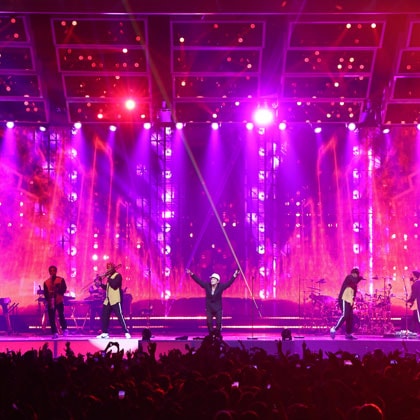PHOTO CREDITS: ©Cory FitzGerald, ©Signify, ©Theo Wargo
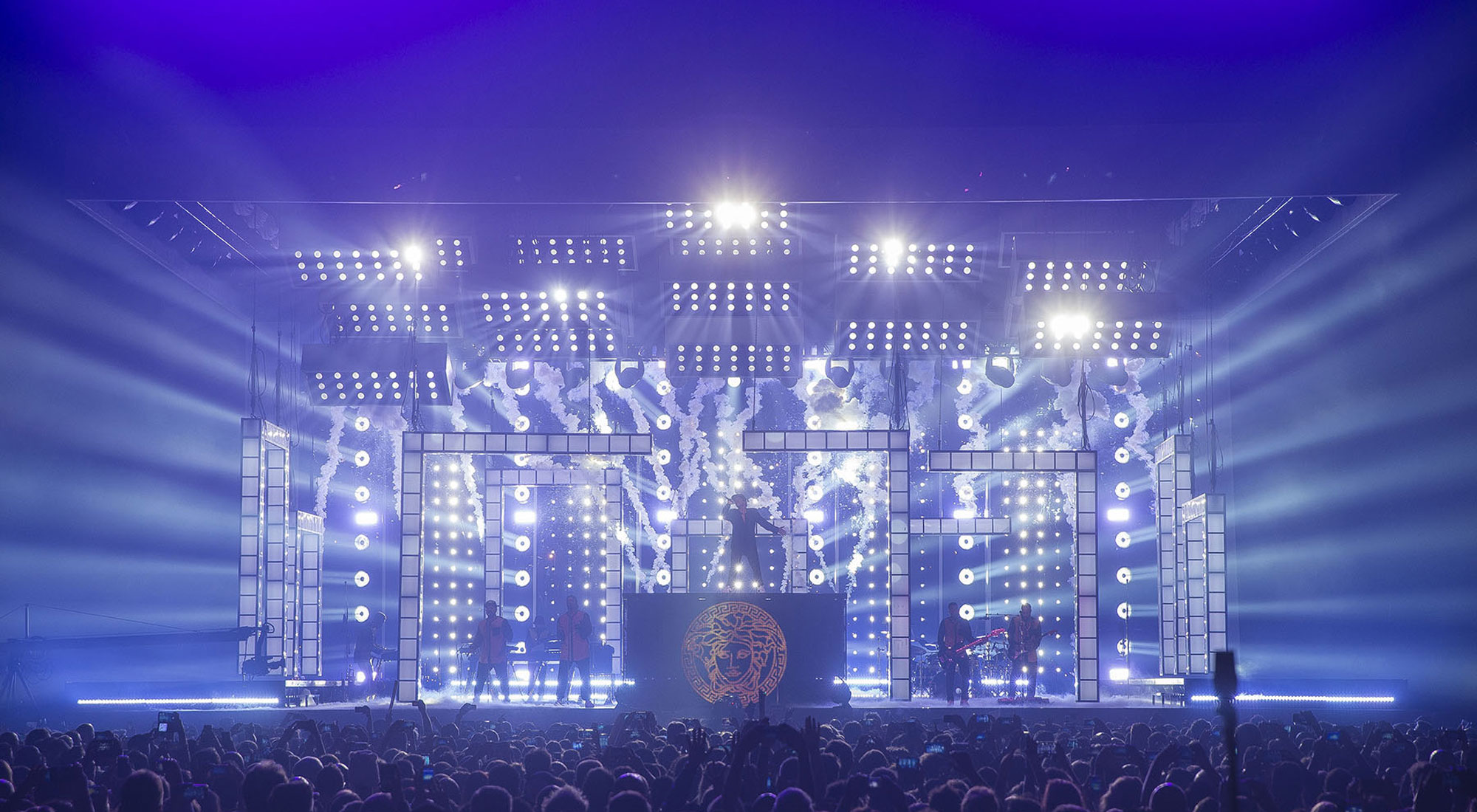
PHOTO CREDITS: ©Cory FitzGerald, ©Signify, ©Theo Wargo
One of the most widely respected names in show lighting design, Cory FitzGerald caught the lighting bug at an early age. He studied theatre lighting at NYU and gained valuable experience both on and off Broadway, before establishing his hugely successful career in concert lighting and creative production. His list of clients includes Bruno Mars, Beyoncé, Justin Bieber, Jennifer Lopez, Janet Jackson and Gwen Stefani, among others. Today he is Creative Director, Designer and Partner at leading design studio, Silent House Productions.
Where and when did your interest in lighting begin?
I started working in a theatre camp when I was 12 years old and wasn’t interested in being an actor! I asked the lighting designer if I could help out and immediately started hanging lights and learning how to run spots. That teenage designer turned out to be James Schipper of Kinetic Lighting, so I blame him for starting me on my path to do lighting professionally.
When did you first realise that it might be a career, and what did you envisage at that point?
I had actually been interested since I was a kid when going to Broadway shows, but when I started learning more about the industry in my teens, I got to spend a day with another family friend at the time – LD to the stars, Stan Crocker – I really thought this could be a career. Seeing someone with a family and ‘real life’ that was so successful made me know it was possible and something I wanted to do, and I’m glad I can still call him a friend and inspiration!
Did you have any formal education in lighting or event production?
I do. I worked throughout my high school career in the theatre in my school’s theatre program, as well as starting at 16 at local shop. I then went to NYU to study lighting design for theatre, thinking I’d end up on Broadway. After trying that, as well as several other genres of lighting programming and design, I found myself lucky enough to involved with some of the biggest concerts around, eventually learning to design and produce shows myself.
Looking back, were there key pivotal moments that changed or influenced the direction of your career?
I think working with a wide array of designers on various types of shows really gave me a broad perspective on how different designers and artists work. I tried to learn what I could and adapt my own style and aesthetic out of that, which I then used to create my own work. I believe the trick is to never stop learning from every situation and collaborator you can.
Who have been your mentors and personal inspirations along the way?
There have been so many throughout the years I wouldn’t want to leave anyone out! But I am constantly learning from my friends and colleagues every day in both how to deal with things and how not to.
What are your career highlights? What has given you the biggest buzz and why?
Working with Bruno Mars since 2010 has been a real game-changer for me. I had been working in many aspects of the business for years before that, but it was with him that I got to really focus on one artist in many capacities as well as a wide array of environments, including touring, TV appearances, music videos and festivals. Creating a large number of experiences in a short time, each with variations on similar themes, I learned to cultivate an aesthetic that was unique to the band as well as myself. That really pushed me past where I had been.
What causes you most frustration about the lighting business?
Normally I would say the various constraints of each show causes the most frustration, but that also forces us to create the best show in that environment – essentially, what makes the show become what it ultimately is. A truly frustrating part is often having to go down paths you know will not work well, but must entertain them nonetheless. It’s hard to explain that something is a bad idea or not possible to execute based on personal experience, if the person requesting the idea doesn’t share that experience. It’s best to try and show why or how something won’t work and offer alternate solutions than just say no to an idea.
What advice would you give to those who would like to follow in your footsteps?
Always learn from both your successes and failures. Often, we forget to examine why something went right versus why it went wrong. Streamlining your process as you go is key for making better and faster correct decisions down the road.
Also, keeping yourself aware of the latest gear and tech trends is great, but stay on top of other interests and ways to explore art in the world: there is no wrong source of inspiration and you never know where or when it will come. Remember to have a life outside of work!
How do you think of yourself, and how do you describe what you do, in terms of ‘art’ and ‘tech’?
I have carried many titles in my career but at this point I think I sit somewhere between a Designer and a Creative Producer. I think tech is key to understand the ‘how’ and art is of course the ‘why’, but the process of getting the show completed is its own production all on its own. There should be another category - ‘politics’. That’s a huge part of any situation and accounts for how most of the time is spent actually facilitating the creation of any show.
Do you think you have a ‘style’ of lighting? If so, how would you describe it?
I do, and I know it when I see it! As far as breaking what that is down, it’s much harder to describe. I am a huge fan of seeing the music, capturing the right sounds with the right looks and effects, knowing that we’ve succeeded at visualizing that aspect of the song. Creating moments and through lines throughout the show is important, isolating performances and creating dynamic cinematic moments is also key, but there is no formula. Making sure all the departments are playing along together and not overshadowing each other. It’s great to have the vision and authority to execute at that level. Otherwise, it’s ‘start simple, stick to one or two colors per song, and make it interesting’!
Can you tell me a Cory FitzGerald lighting design rule of thumb?
Timing is everything.
You’re a keen photographer – how does that influence your design work?
Especially in today’s Instagram- and YouTube-driven world, it’s incredibly important to have an understanding of cameras, an eye for composition and the idea of how so many people consume media at this point. There are no bad tools to have in your box and photography means a lot more today than ever before.
Successful show production depends on collaboration, with great communication and understanding between artist/performer and creatives, and between the various creative disciplines. What techniques have you developed to ensure that runs as effectively as possible?
As mentioned above, this is the hardest part of the game. Knowing how to guide a team and get the best results is all about knowing how to manage assets. Learning how people work and what they do is key to getting the best work from them and making the process as smooth and enjoyable as possible.
What traits do you admire most in the people you collaborate most successfully with?
Positivity is always key. Understanding that we’re all here to do the best we can and use the knowledge people bring to the table in the most efficient way possible makes the day go by in a much more enjoyable way. Experience and understanding come with time, but being open to learning at any age and from any source is incredibly important and allows new ideas to thrive. A good idea in life I try to follow is to ‘Argue like you’re right, but listen like you’re wrong’.
Where do you find inspiration for your designs?
Everywhere I can! I love architecture and light art instillations but seeing new materials and objects can often start an idea in my head that has to get figured out in a set of constraints that make the show unique!
How does social media affect how you approach a design, and how aware you need to be of lighting for camera?
Social media and cameras affect everything now. Whether they are the direct result of what we’re creating or the medium by which it’s ultimately interpreted, we need to think through each element of the design so that we account for this. Notes are no longer given after the show, they are given after reviewing Instagram of the show.
Are there areas of lighting design that you haven’t yet tried but would like to?
I would be curious to get more into architecture, art instillations or different types of museum install pieces. I would also see how to make interactive displays make more sense and be truly interactive.
Which other lighting designers do you particularly admire?
I wouldn’t want to leave any out! :) There are incredible designers out there showcasing their work on social media and the generation of folks coming up immersed in the technology of today and tomorrow are creating truly inspirational ideas!
What do you think are the most important attributes for a successful designer in your field?
The most successful designers I know are smart, quick to adapt to changing situations, willing to listen and work with teams, often leading them to the right paths. Creativity is key, but it takes more than a good concept or reference to actually create something.
What are the main performance characteristics you look for in a luminaire?
The usual topics are: bright, fast, dynamic, and unique. Dynamic can be anything from great color mixing, unique patterns or fast zoom/iris/shutter, but something that can set it apart from its similar class fixtures. Unique is the holy grail of doing something that no other light can do yet, or ever. There are still a few of these out there and are the go-to for specific applications, or the workhorse for a catch-all fixture that is the new rig staple.
How far is low power consumption a consideration for you?
It’s only really a concern for me if it applies to the show. I usually don’t worry about power or weight unless I know those are factors going into the design that have to be accounted for, as you don’t want to put a fixture somewhere it can’t go or will ultimately get changed for a physical issue.
What do you think about the current state of LED stage lighting fixtures on the market?
I love LED engines, both white light and color mixing. I think the next few product generations will see massive jumps in brightness and CRI and continue to change the way we use fixtures.
How closely do you work with manufacturers in pushing them to develop the tools that you want/need?
I’ll have many discussions about a product that exists or helping to fine-tune things like firmware to get dimming curves or color calibration when possible, and that usually leads to chats about what types of changes I’d make or what fixtures I feel are missing in the market. I always have time to talk more about what could be done better, or flaws I think could be fixed to make a better fixture as that helps everyone in the end.
What’s missing from the LD’s toolkit? What would you like to see from manufacturers?
It’s always hard to pinpoint something that will be a mass-marketed tool for everyone to be happy with, but I think people are doing a great job these days of constantly refining their products into better versions. Often, too quickly we will see a type of light outpace its predecessor, which will have to be upgraded or replaced if possible before its life expectancy is over. This is going to be more and more of a problem with newer, brighter fixtures with similar feature sets.
I think, personally, there are a few lights out there that are great all-in-one tools in various size increments, however I would still love to see a giant beam light that has the power and speed of a Syncrolite with modern tech and feature sets. Outdoor fixtures have come a long way, but the fixture choices for outdoor rated fixtures that are top of the line and available are still quite limited.
